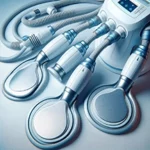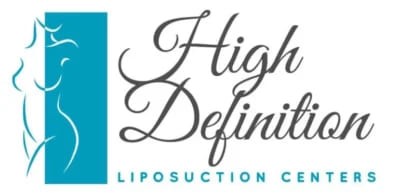Introduction: Liposuction alternative
Liposuction defines the ability to remove fat from your body to improve your body contour. Liposuction delivers permanent fat removal by literally suctioning out unwanted pockets beneath the skin. However, not everyone is a candidate for the surgical procedure or wants to undergo the recovery required. Thankfully, several effective non-surgical alternatives now exist for reducing specific areas of fat. Here’s an overview of today’s top liposuction alternatives to consider that include: CoolSculpting, Mesotherapy, Fat Melting Lasers, External Ultrasound therapy, and message therapy.
Evaluating If You Are a Candidate for Actual Liposuction
Traditional liposuction performed by a cosmetic or plastic surgeon involves:
- Administration of general anesthesia or IV sedation (Rotunda et al., 2021)
- Making small incisions into the treatment area
- Inserting a metal cannula connected to suction
- Aggressively removing deep fat deposits through the cannula
- Wearing compression garments for weeks post-procedure
- Some pain, bruising, swelling, and downtime during recovery
Ideal candidates for liposuction include:
- Those with isolated fat bulges unresponsive to weight loss efforts (ASAPS, 2022)
- People who are within 10-20 pounds of their ideal weight
- Individuals with good skin elasticity
- Healthy individuals able to safely undergo anesthesia
- Patients with modest fat removal goals
If you do not match the ideal criteria, non-surgical body contouring alternatives may be better options to consider.

CoolSculpting Fat Freezing for Non-Surgical Fat Reduction
CoolSculpting uses cryolipolysis technology to selectively damage fat cells by controlled cooling of the skin’s surface above them. The FDA-cleared treatment can safely reduce moderate bulges on the abdomen, flanks, thighs, arms and under the chin (ASDS, 2022). Patients see an average fat layer reduction of 20-25% per treatment area. While mild discomfort can occur during the 60-minute procedures, no anesthesia or downtime is required. Results become visible after 2-3 months as the body eliminates the treated fat cells.
Using cooling paddles on your skin, Coolsculpting can expose the most superficial fat layer to cold or hypothermia. In essence, the fat cells are frozen like getting frostbite which results in fat cell death and resorption. Once the fat cells have died, they are removed by the body resulting in fat elimination. Patients will typically undergo several treatments ranging from 2 to 4 sessions lasting one hour each. Coolsculpting claims to be painless although patients subjectively have expressed that there is discomfort. Finally, Coolsculpting claims to result in approximately 25% improvement in contour concern.
Coolsculpting is a liposuction alternative that can be performed in the office setting and will result in improvement in localized areas treated in the short term. The problem with Coolsculpting outcomes occurs when there is weight fluctuation in the long term. If there is moderate weight gain following treatments, there can be an overgrowth of the area that results in a contour abnormality far worse than the initial concern.
The overgrowth of volume in the area is related to the overgrowth of the fat in the deep fat layer that was not amenable to removal by cryotherapy and is called paradoxical adipose hyperplasia (PAH). Instead, cryotherapy can only remove superficial fat. A discussion of fat anatomy and physiology is needed to appreciate why removal of the superficial fat only is not prudent and why we do not recommend this liposuction alternative.
Fat is located in two layers; the superficial fat located under the skin and the deeper fat located above the muscle layer. The superficial layer is thinner in height and not dynamic; this means it is not dramatically affected by weight gain or loss. The deep layer is thicker and more dynamic so it is the layer dramatically affected by weight gain or loss. In PAH, the superficial and more protective layer is removed. It seems that when the superficial layer of fat is eliminated, the deeper fat will grow preferentially to other deep fat that is still covered by superficial fat. This will result in aggressive overgrowth of fat cells in the area of treatment paradoxically.
Thus, the PAH deformity describes the unnatural overgrowth deformity previously described. As such, patients who have undergone cryotherapy and subsequently experienced weight gain are going to observe unnatural changes in their contours. Fortunately, using a combination of VASER ultrasound-assisted liposuction and excisional surgery, these deformities are being definitively treated today. If you are experiencing complications related to PAH following the completion of liposuction alternative Coolsculpting, we urge you to contact our office for a complimentary consultation.
Injectable Mesotherapy for Dissolving Fat Nonsurgically
Mesotherapy involves carefully injecting a customized cocktail of natural ingredients like vitamins, amino acids, plant extracts, and medicines using thin needles (Elmophy & Abdel Raheem, 2021). The solutions work to enhance metabolism, improve fat breakdown, increase circulation, and provide other benefits. Typical areas treated for fat dissolution include the abdomen, thighs, arms, and chin. Six to ten treatments every 10-14 days are usually needed for optimal effect. Mild side effects include temporary redness, swelling, and tingling at injection sites. The unfortunate side effect of mesotherapy is that there is a lack of control when dissolving the fat since the injection of the medication can not be distributed evenly.
Fat-melting lasers Like Zerona For Non-Invasive Liposuction Alternatives
Devices like the Zerona laser utilize low-level cold laser technology applied externally to the skin (Astro, 2022). The non-invasive light penetrates beneath the skin, releasing the fat contents inside the fat cells. Treatments are completely painless, with no downtime or side effects. Six sessions every few days are recommended for optimal fat reduction on the hips, waist, thighs, arms, and abdomen. Unfortunately, the results are only subtle and noticeable following a 2-3 month delay after completing treatment.
Ultrasound Energy For Non-Surgical Fat Destruction
Focused ultrasound is another technique that destroys fat non-invasively. Devices like UltraShape and Liposonix use FDA-cleared high-intensity focused ultrasound (HIFU) to selectively target fat cells without damaging surrounding tissues (Labib, 2021). The ultrasound energy triggers fat cell death and their gradual elimination by the body over one to three months. Treatments take about 30 minutes for areas like the abdomen and thighs, with patients reporting mild discomfort during the procedure. Unfortunately, the effects are subtle, and multiple sessions are typically needed for incremental fat reduction.
Massage Therapy To Mobilize Fat Nonsurgically
Specialized deep tissue massage techniques may help reduce the appearance of fat pockets and cellulite through several mechanisms including (Amin & Sarkar, 2021):
- Manipulating the extracellular matrix surrounding fat cells
- Increasing lymphatic drainage to remove waste
- Enhancing blood flow to stimulate circulation
- Stretching tightened fascial compartments
Common areas massaged for fat mobilization and skin smoothing include the thighs, buttocks, abdomen, and arms. Unfortunately, multiple repeat visits are needed for results that are not fully attributable to fat elimination.
The Takeaway: Liposuction Alternatives Do Exist
While liposuction remains the gold standard for removing larger volumes of fat quickly, various non-surgical technologies now safely reduce specific fat pockets on the body’s periphery. Options like cryolipolysis, ultrasound, massage, and injectables gradually eliminate fat cells via different mechanisms. Consulting board-certified providers determines the optimal liposuction alternative approach based on your body goals and concerns.

